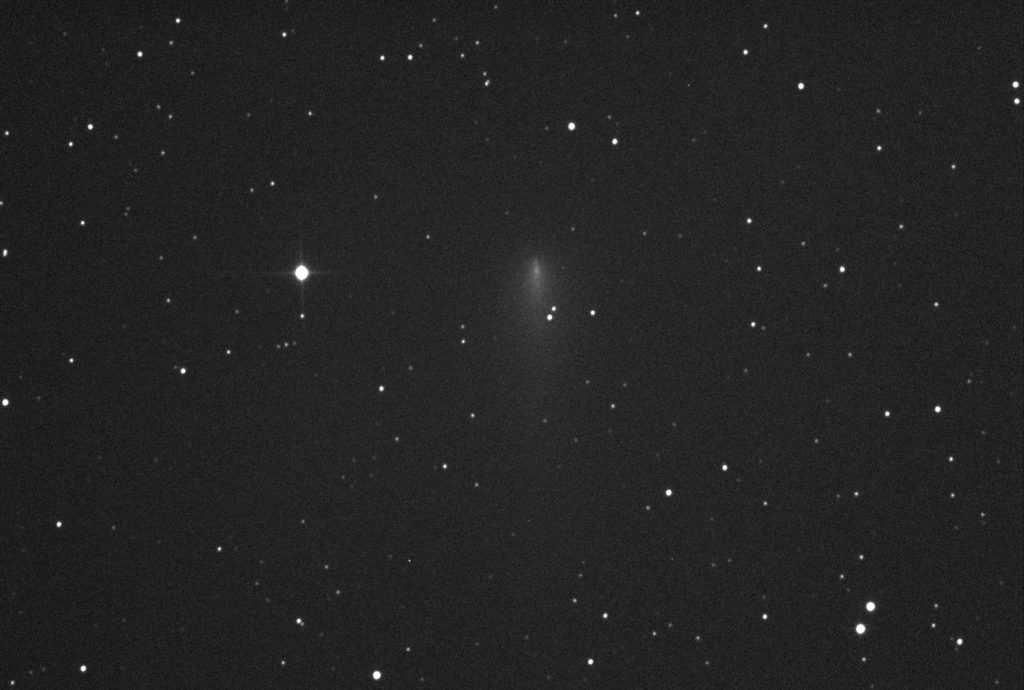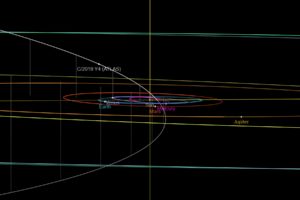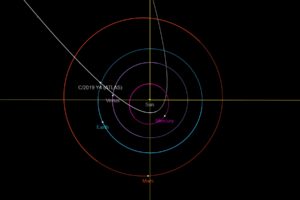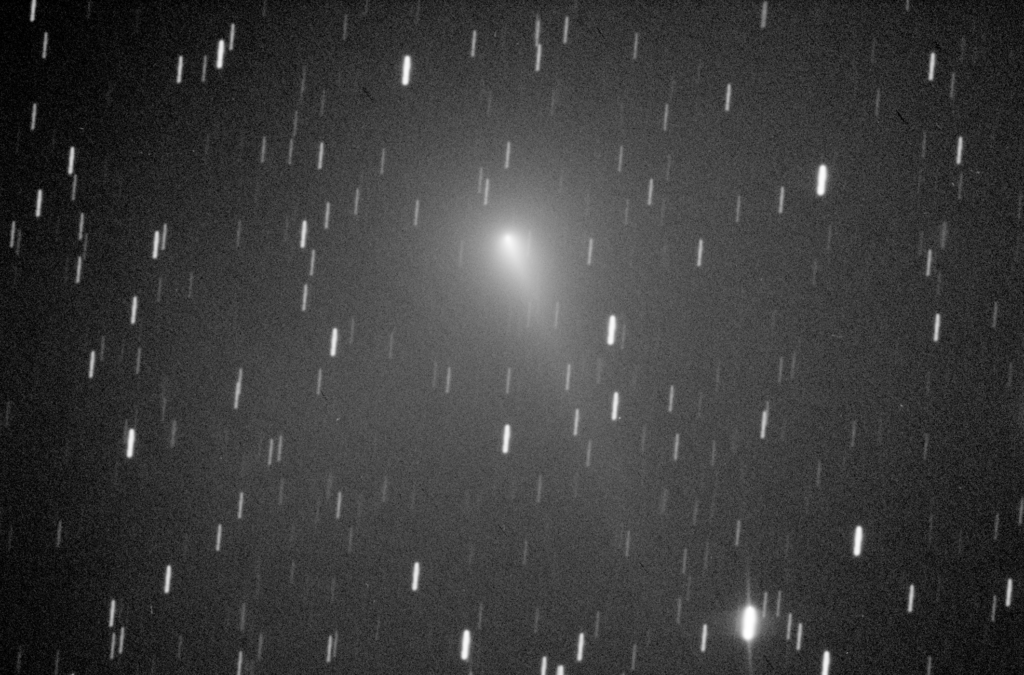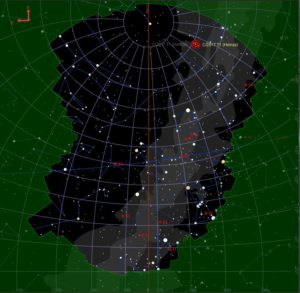Comet C/2019 Y4 (ATLAS) continues to fade after its apparent fracturing sometime during the early days of April. This animation shows 30 minutes of motion on the morning of 12 April. The brightness near the center of the coma is elongated and there is no central condensation indicating the nucleus is losing structure.
The still image is the first of the 60 images that I used to create the animation.
Comet ATLAS is still heading toward the Sun for a perihelion inside Mercury’s orbit on the 31st of May. It is currently above the plane of the solar system a little less than half way between the orbit’s of Mars and the Earth. It is now visible in the northern constellation Camelopardalis (the giraffe).
The image is a stack of twenty-eight 30 second exposures registered to the comet. The tail appears to be a little more defined and the outer coma fills nearly all the FOV.
For the past two weeks I have been preparing for the new science camera. It uses different cabling and doesn’t use water to assist the cooling. So I had to dismount the scope and disassemble the mount to remove the old cabling and the water plumbing. I then installed the new control cables and took the opportunity to upgrade one of the USB hubs and cabling to USB3 for the planetary camera. Then everything was put back together and the scope remounted.
The final part of the new science camera system arrived yesterday (the 21st). I took the filters out of the old filter wheel and installed them in the new one. The new filter wheel only holds 8 filters so I had to choose which two will go into storage. The next step was to mount the filter wheel on the camera and mount to the scope. The new software was tested yesterday afternoon and there was no apparent problems.
Just after midnight the skies started to clear so I powered everything up and took a shot at a random spot in the sky. A couple of jogs to the focuser brought the image somewhat close to focus. So, here is the new camera’s first light image.
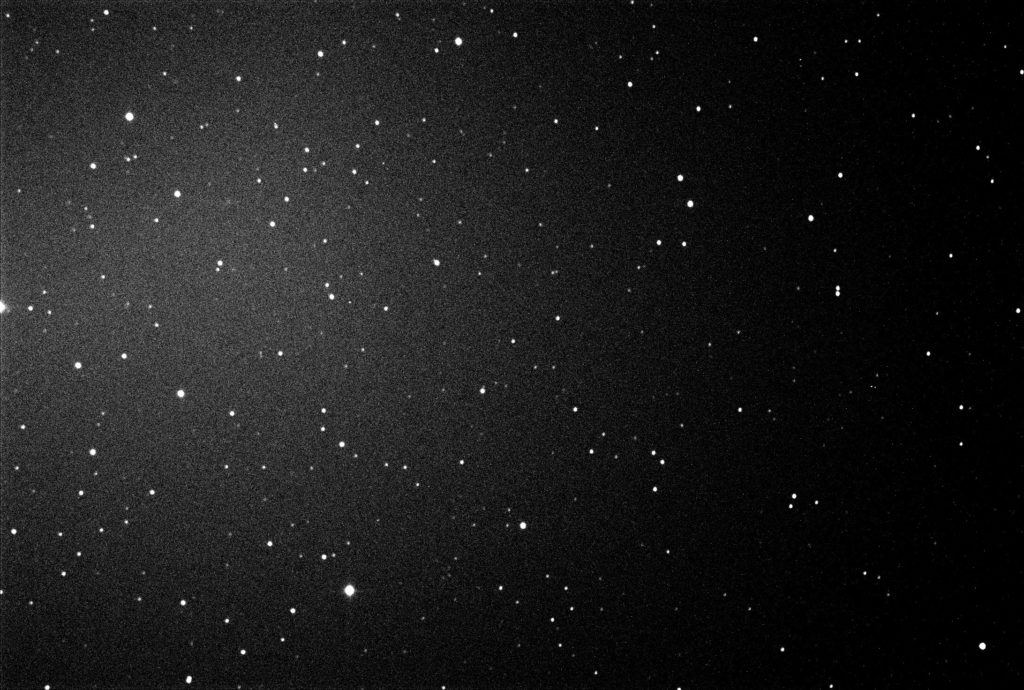
This image has no processing, is manually focused, the scope is out of collimation and some lights were still on in the dome room. But it was good enough to tempt me to take a look at a brightening comet.
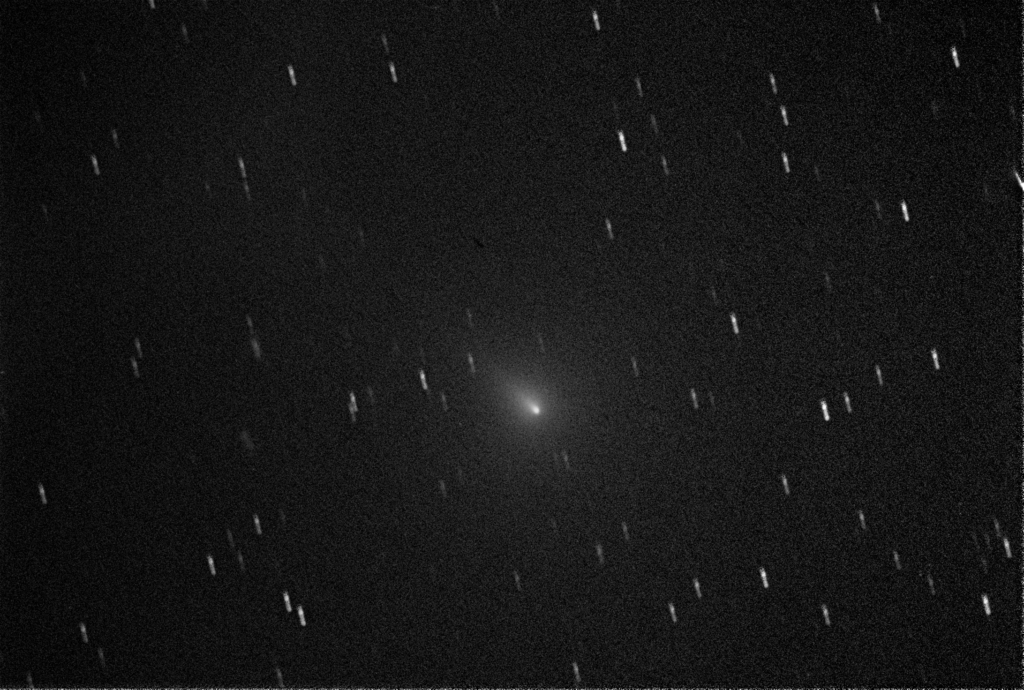
This is comet C/2019 Y4 (ATLAS). The comet is currently inbound, above the plane of the solar system and has just crossed the orbit of Mars.
The image is a stack of fifteen 60 second exposures registered to the comet. There were high thin clouds passing and that can be seen in the star streaks and the mottled background. But it is enough to prove the system works and that the PTO is getting close to being back in operation.
There will be several visible events this coming week. Two for everyone and a couple more for those of you on the Florida panhandle.
We have two excellent ISS passes this week for those of you in the panhandle. The first will be on the evening of the 12th. The station will clear the horizon at 18:09, travel from the NW to the SE but drop into the Earth’s shadow high overhead about 18:15. Watch for it to redden as the station experiences sunset.
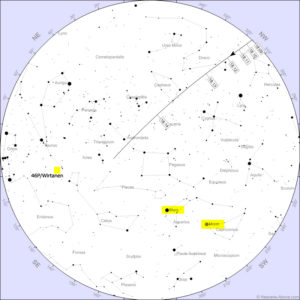
The second ISS pass will be on the evening of the 15th. The station will clear the horizon an hour earlier at 17:09, once again travel from the NW to the SE and drop below the horizon at 17:19. Notice how close the ISS will come to the Moon. In fact, for some of you in a very narrow path, the ISS will cross the face of the Moon (a transit).
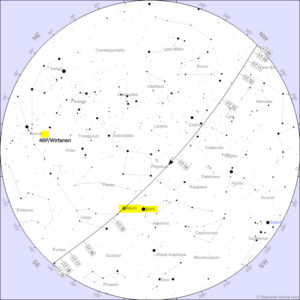
|
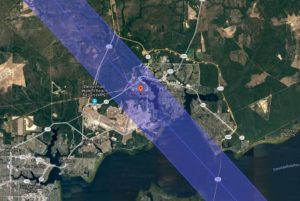
|
For everyone else the items of interest are the comet 46P/Wirtanen and the Geminid meteor shower. Comet 46P/Wirtanen is a periodic comet (hence the P in the name) that orbits the Sun every 5.4 years. This time the 3/4 mile wide comet will close to within 7.1 million miles of the Earth on the 16th. That’s roughly 30 times the distance to the Moon. I have annotated the location of the comet on each of the ISS charts, however, it will be much easier to see later in the evening as it gets higher in the sky. It will be highest at 21:50 on the 12th and at 22:02PM on the 15th. Notice how much it will move between the 12th and the 15th. It has been reported to be naked eye visible now but you will still need a dark clear sky to see it. Binoculars will make it a bit easier. It will look like a faint fuzzy ball. Photo’s just barely show a tail so I don’t expect to see one visually.
You won’t need binoculars to see the denizens of the Geminid meteor shower. The shower is already underway but predicted to peak around 04:00 (CST) on the morning of the 14th. As usual for meteor showers, a dark clear sky is needed. Just find an area with as much clear horizon as you can, get comfortable (read warm clothing) and look up. The meteors can appear anywhere in the sky. Right now the shower’s radiant clears the horizon about 18:30 PM and is high overhead by 02:15. The darker the sky and the higher the radiant, the better your chances will be to see some of the meteors.
Comet Heinze continues to climb above the plane of the solar system and the Earth is now pulling away from the comet. It is still outside Earth’s orbit as it heads toward perihelion on the 21st of February. It now appears in Cassiopeia on its tour of our constellations.
| These images were taken last night (the 6th). The comet’s tail is becoming more apparent. There were some high thin clouds that were passing and are evident in the animation. I added a second pass thorough the images at a slower rate to make it easier to pick out the two satellites that photobombed the comet. One is in one frame and passes from bottom left to right center (or vice versa). The second is a much slower satellite. It takes two frames (10 min) to pass from bottom center to top right. |
